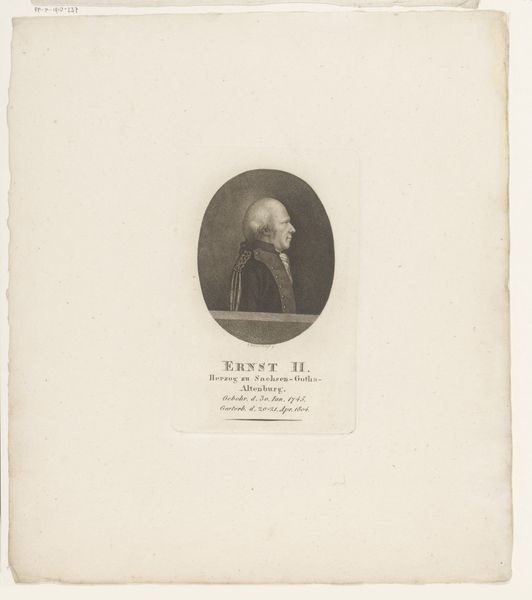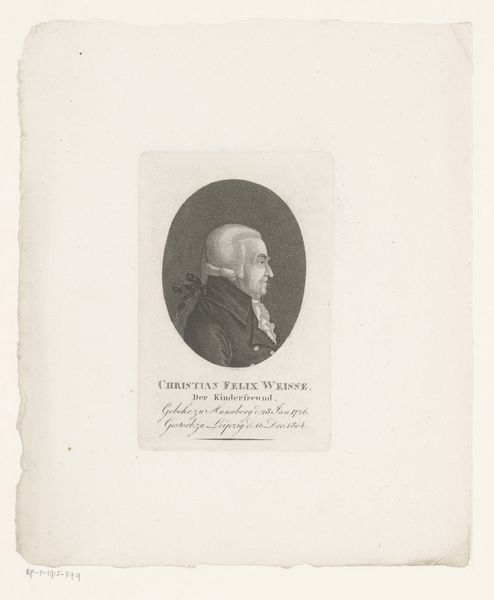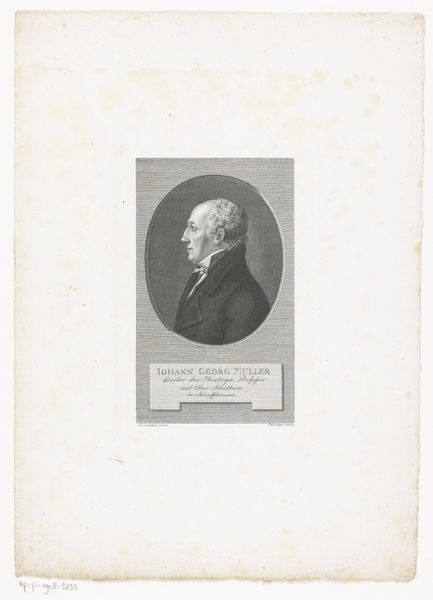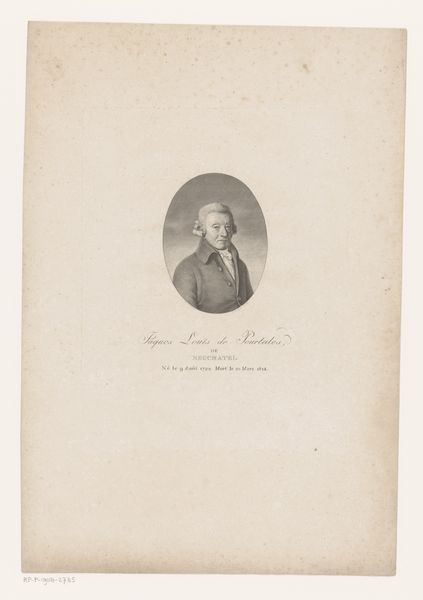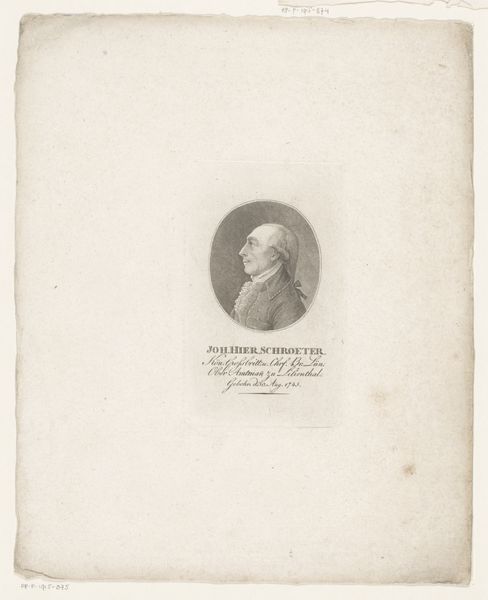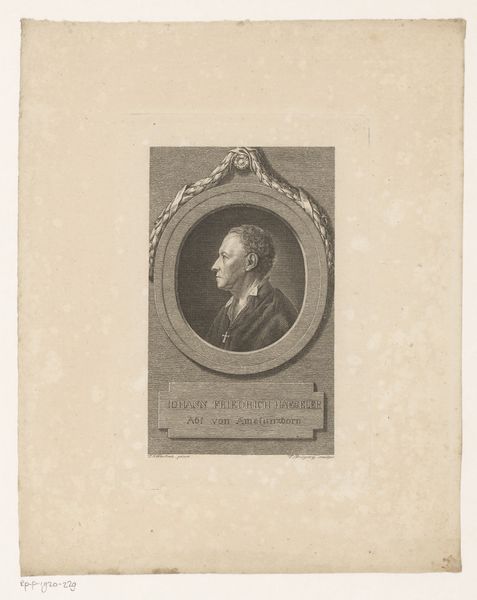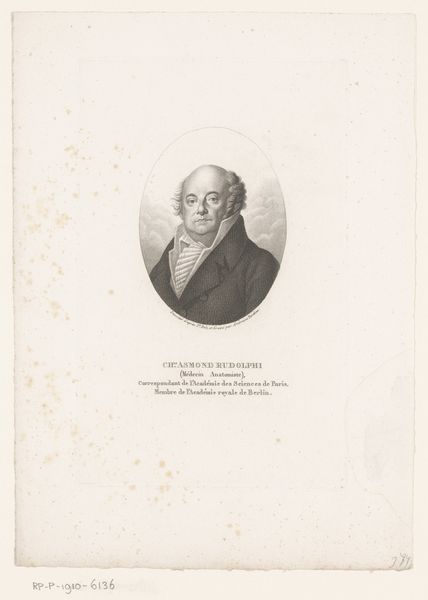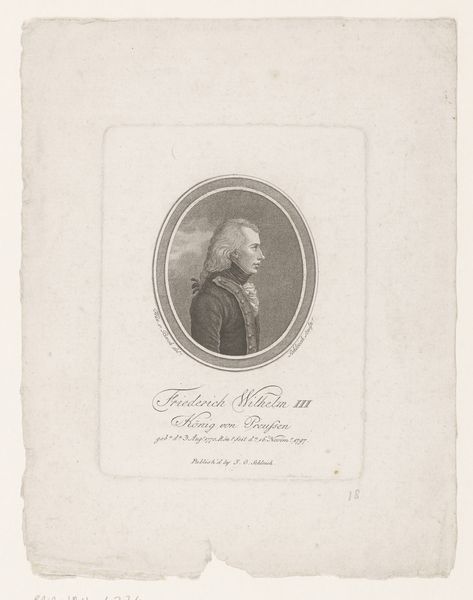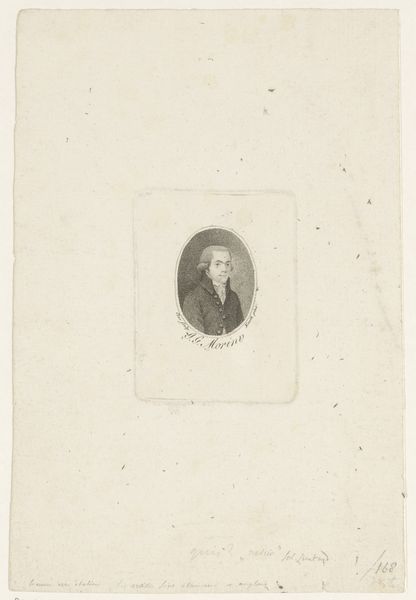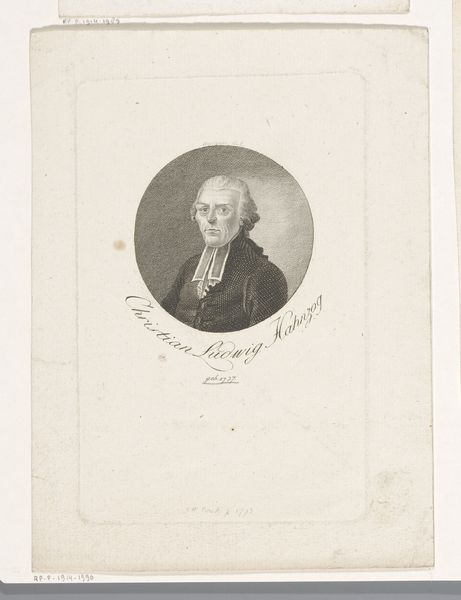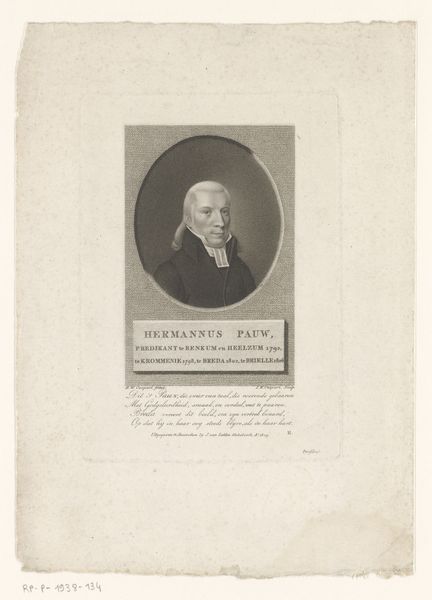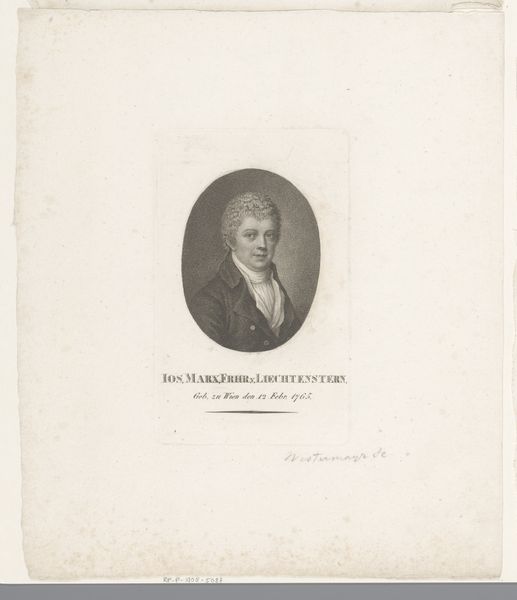
print, paper, engraving
#
portrait
#
neoclacissism
# print
#
paper
#
history-painting
#
engraving
Dimensions: height 140 mm, width 90 mm
Copyright: Rijks Museum: Open Domain
Konrad Westermayr rendered this portrait of Charles Messier in ink on paper. Encased in an oval, Messier’s presence evokes the classical tradition of portraiture, reminiscent of Roman busts that celebrated notable figures. Consider the oval frame itself. This shape, often used to enclose portraits, carries a symbolic weight. It suggests containment and focus, directing our gaze solely to the individual, almost as though to trap the sitter in time. We can trace this motif back to ancient coins and cameos, where rulers were similarly enshrined within circular or oval borders, signifying their importance and permanence. Yet, this sense of timelessness is complicated. The very act of portraying someone within a frame acknowledges mortality—a desire to capture and preserve a fleeting moment. It reveals our psychological need to immortalize figures of significance, battling against the inevitable passage of time. The oval, therefore, becomes a potent symbol of both memory and the poignant awareness of loss, capturing the human struggle to leave a lasting imprint.
Comments
No comments
Be the first to comment and join the conversation on the ultimate creative platform.
